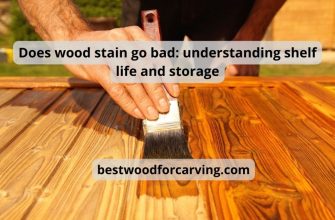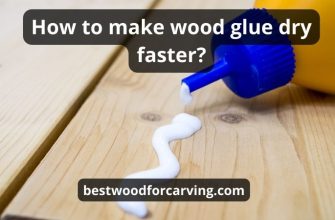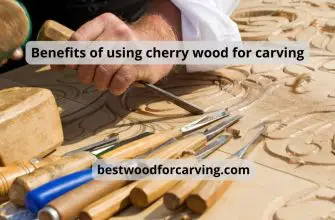Does wood glue go bad? Well, wood glue – a thing equally necessary both for professional work with wood and for minor repairs of the house. Here we will deal with you on how to properly store wood glue so that it does not dry out before time, what happens to it when it expires, and how to extend its life.

- Can wood glues spoil?
- Does Titebond wood glue expire?
- How long must wood glues be kept? How long does wood glue take to hold?
- Can you use out-of-date wood glue?
- What if the glue was stored in a cold room and froze?
- How do you even know if the glue has gone bad?
- What if the glue is stuck on top of it but it’s still liquid inside?
- Does wood glue go bad? Summing up
Can wood glues spoil?
Yes, wood glues can spoil over time, especially if they are not stored properly. Most wood glues have a shelf life of about two years if they are stored in a cool, dry place with the lid tightly closed. Exposure to heat, moisture, and air can cause the glue to break down and spoil, which can affect its ability to bond wood properly.
Some signs that wood glue may have gone bad include a sour or rancid smell, a thickened or lumpy consistency, and reduced bonding strength. If you suspect that your wood glue may have gone bad, it is best to discard it and purchase a new bottle. Using spoiled wood glue can result in weak or failed bonds, which can compromise the structural integrity of your woodworking projects.
Does Titebond wood glue expire?
Yes, each type of wood glue, each brand of glue has its own official shelf life, determined by the manufacturer – for example, Titebond glue (Titebond II, Gorilla Wood Glue) has an official shelf life of two years. After the official shelf life expiry date, wood glue typically doesn’t lose its properties, unless it has changed its color or density.
And it should be added that the shelf life of Titebond II glue wood is calculated for storage in suitable conditions. That is, in cool rooms, a certain humidity, without direct sunlight. If the storage conditions are not met (are they met anywhere?), do not expect the glue to not spoil before the expiry date, even in the unopened state.

How long must wood glues be kept? How long does wood glue take to hold?
Usually, wood glue is kept for no more than three years (i.e., Titebond glue, Titebond II). This storage period is typical for PVA glue and polyurethane glue. Open packaging has a different shelf life, depending on the surrounding temperature and humidity, and how tightly sealed it is. Most wood glues manufacturer does not play a role, only the sort of glue is important.

The best places to store PVA glues will be the same as food storage. First of all, of course, it is a refrigerator. It respects all necessary storage conditions: humidity, temperature, and the absence of direct sunlight. The cellar is also a good fit, if there is no oven in it, of course.

Purchase a little bottle of glue at first
If you doubt the qualities of glue, then do not just buy a large package. Buy a small package of the same brand and test it, to see if it glues well to the desired surfaces and whether it is well stored. And if it’s okay, then buy a bigger size.
Can you use out-of-date wood glue?
The answer here is the same – of course, you can, but first, test it. Use it either on extra material, or where it will be unnoticed. In principle, if the compound is not subjected to high loads in the future, a slightly dried PVA glue will certainly not fail.
Do not forget to carefully clean the bonded surfaces – the cleanliness of the surfaces is very important for the quality of the connection. Otherwise, you run the risk of rejecting and discarding good glue just because you forgot to clean the surfaces yourself.

What if the glue was stored in a cold room and froze?
Most wood glues – especially water-based glues (Titebond III PVA glues) – freeze easily at negative temperatures. More precisely, the liquids that makeup it freezes.
Therefore, it is necessary to store the glue in heated rooms because from one or two frosts it will not completely spoil, but with each new cycle of freezing-unfreezing, its ability to glue will decrease. Experts also note that manufacturers lay two to five cycles of frost-defrost almost without reducing the quality of bonding.
The chemical and physical reasons for this gradual decline in quality are very simple: water in water-based glues – that is included in the glue when frozen crystallizes, and when thawed actively evaporates, making the wood glue thicker. Within a couple of frost-defrost cycles, no significant loss of liquid can occur, so the quality of the glue remains almost unchanged.

How do you even know if the glue has gone bad?
For starters, just try to pour it a little – if it retains fluidity, then it is not so bad. If the glue forms gels and is elastic and hard, then the whole bottle should be thrown away. If it’s liquid enough to be dripped on, try gluing a couple of unwanted pieces of wood together and see how it behaves.

Note the color – if it has changed to a darker than it was originally, has become brown or dark orange, likely, it has already lost some of its properties. Again, test it. When something spoils, the first sign you notice is its smell. If its usual smell changed somehow else (notice the difference?), don’t hesitate to throw it away, the glue has gone bad.
What if the glue is stuck on top of it but it’s still liquid inside?
If the wood glue is stuck in the nozzle of the bottle, then the crust can simply be mechanically pierced with a needle or something thin and metal that is at hand. If you can’t clean the nozzle, you can finally cut it off. The main thing is to remove the crust and get to the liquid yellow wood glue fraction.

Does wood glue go bad? Summing up
If you are a woodworker, and you regularly use adhesives like PVA glues, etc., the first thing you should consider is its storage. The best place to store glue is a basement or a refrigerator. The adhesive does not degrade instantly, therefore, test it before gluing something important, test it because even if the glue forms gels, it can still be suitable for some parts.
Read also: Relief carving for beginners: What you can do to get started








![What is a Wood Planer? [4 Types of Wood Planers] What Is A Wood Planer: Best Helpful Guide & Top Review](https://bestwoodforcarving.com/wp-content/uploads/2023/12/What-is-a-Wood-Planer-335x220.jpg)


